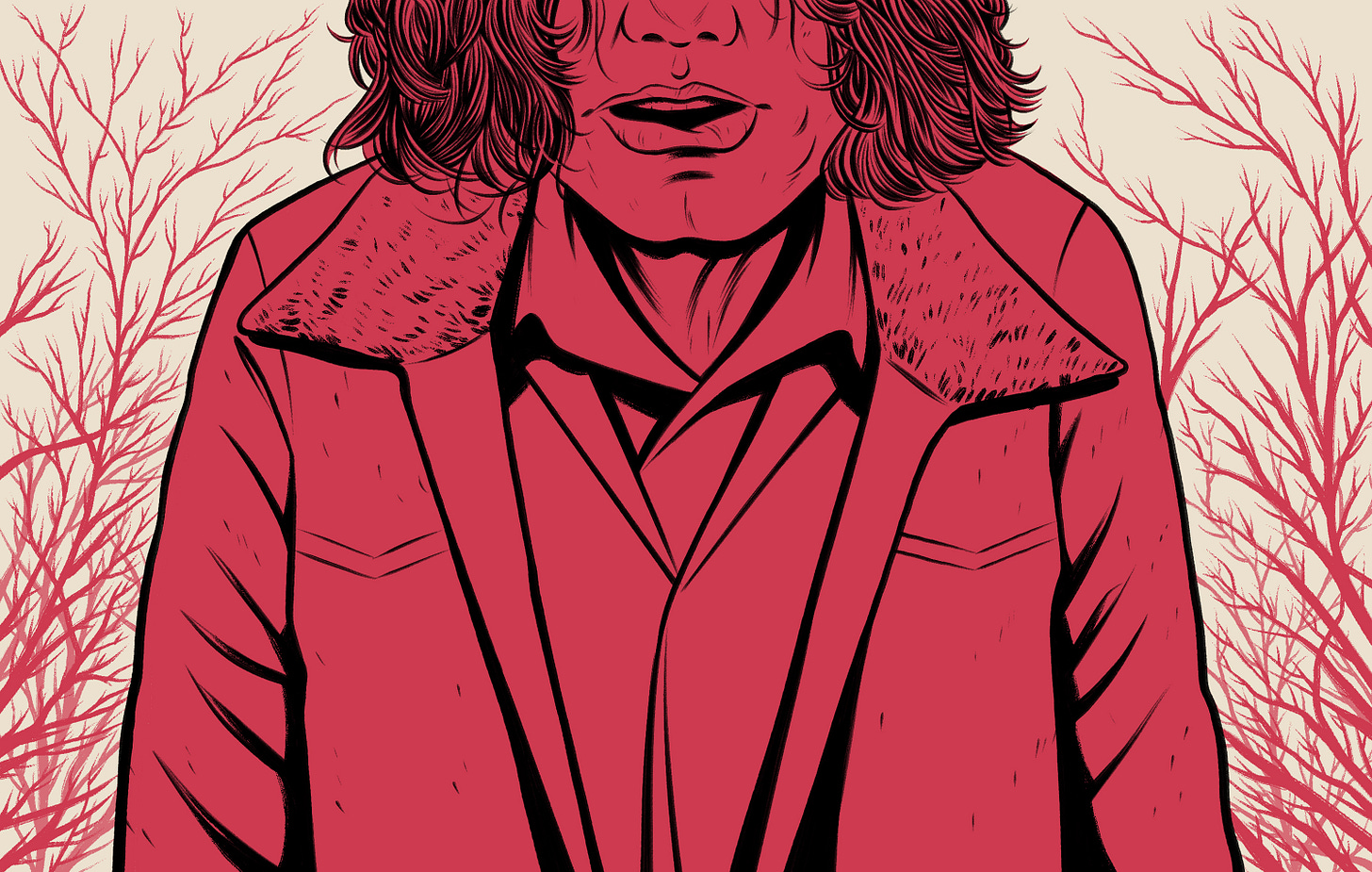
‘Hail, Satan’ doesn’t have the same impact that it used to have.
I hear it on podcasts as a sign-off. I see it on Etsy-made rings. The devil is good marketing. And, in Osgood Perkins’ film Longlegs, the Devil is a colour. The film’s hype has coloured with poster-friendly hyperbole like “upsetting”, “terrifying”, “the scariest film ever”.
But, reader, it’s not.
The expectation set up by the hype machine might cause disappointment for some viewers, but Longlegs is never interested in scaring you.
Longlegs, like most great horror films, is not actually about the story it’s telling. Short and sweet: a rookie FBI agent hunts down a serial killer whose modus operandi is wrapped in mystery and sinister coded notes he leaves behind. They circle each other, they share a special connection, they come face to face. Bloody memories, microfiche investigations, warped intentions, ominous clues. The sleuth and the killer colliding is the bread and butter of every serial killer movie ever. We expect it, we demand it.
Longlegs gives us two generations of performers approaching a heavily coded genre: Nicolas Cage is garish, Maika Monroe minimal. Cage’s face is barely visible under the stucco make-up, like a vaudevillian who never took off the white paint, letting it build up into new features. His voice, though, is classic Cage. He shrieks and screams like he’s testing his vocal boundaries. But it’s not the memeable freak outs that stand out for me: it’s the eyes. The wet wretchedness of his expression when Harker walks into the interrogation room. Like the serial killer movie, he’s there to deliver the goods. We expect this from him. We do not expect him to ruin his made-up face, to snigger ‘Hail, Satan’ through the bloody gap that once used to be a mouth. Even when he no longer has a face, those wet eyes are still glimmering through the blood.
Monroe, if one were to be ungenerous, could be interpreted to be cosplaying Clarice Starling: her keenness, her thoroughness, her severe ponytail. But throughout her horror performances — her breakout as the teen chased by an invisible monster in It Follows (2014), the trophy wife alienated in a foreign country in Watcher (2022) — she has calibrated the amount of hauntedness to imbue her character with. In Longlegs, her Lee Harker is tightly coiled, sometimes for comedic value (the obscenely creepy marketing for the film never reveals that it’s funny). She’s aggressively perceptive, and likes order. She organises crime scene images like she organises her pens. She volunteers herself to Longlegs (the case and the killer) because solving it will, in a way, solve the mystery of her own childhood, her unreliable memories.
The mother, played by Alicia Witt, is almost laughably detached. She is, at first, merely a voice we hear on the line. Croaky like she only speaks when Harker calls her. Harker calls her as a matter of routine, another box to tick off her to-do list. A pathologically nice hoarder, unable (or unwilling) to comprehend her daughter’s job, how her job is her mission, really. In every conversation she’s making her way through the list of polite questions and motherly aphorisms.
Osgood Perkins’ celebrity parentage – his father, Psycho star Anthony Perkins; his mother, model and photographer Berry Berenson – has come a lot in the promotion of the film. Bringing up a filmmaker’s parents might be tacky, but Perkins has made it explicit in interviews that he’s exploring his family’s mythology, the domestic one and the one we read about on Wikipedia, through his films: “I Am the Pretty Thing That Lives in the House is about his father, and Longlegs about his mother.” It’s not a direct metaphor (Perkins is too good and too weird filmmaker for that sort of baseness), but Longlegs is concerned with the stories we are told and the stories we choose to believe. The stories our parents tell us about about themselves, our families are a truth, but might not be the truth.
Longlegs is, on the surface, a mystery, like all serial killer movies. A code to be cracked. A puzzle to be solved. A twist to be expected. But unlike most films that belong to this well-trodden subgenre, Longlegs is not interested in the puzzle. Which is why, unfortunately, the film’s need to over-explain itself makes the third act suffer.
Perkins’ films always craft a world that exists in parallel to ours. There is no pretence of normality here. The framing is stretched, there’s too much blank space around characters, the editing either lets a scene continue for a beat too long or unexpected cuts away. All these choices serve to unsettle us without drawing too much attention to it. Just like in his previous films, The Blackcoat’s Daughter and I Am the Pretty Thing That Lives in the House, Perkins conjures up a highly specific mood. And, in Longlegs, the mood is Satan.
The greatest story the Devil ever told, the adage goes, is that he doesn’t exist. There is no Devil in Longlegs, there are just stories about the Devil, the Man Downstairs. In Longlegs, the Devil exists, but he’s not the point. “Satan is a colour”, Perkins told me. Satan is the mother’s complicity. The story she weaves for herself and her daughter. Satan is the story we tell ourselves about whatever we consider to be evil, and how it justifies the actions we take to protect ourselves and our own.





Great article! Watching Longlegs was such a strange experience for me because it's the first time I've ever agreed with all the reviews a film has got, good and bad. 2 stars because the plot is ridiculous? Yes, agreed. 4 stars because it's utterly gripping and beautiful to look at? Absolutely. 3 stars because it's impossible to tell whether Cage's performance is genius or ludicrous? It's both! I honestly can't stop thinking about it.